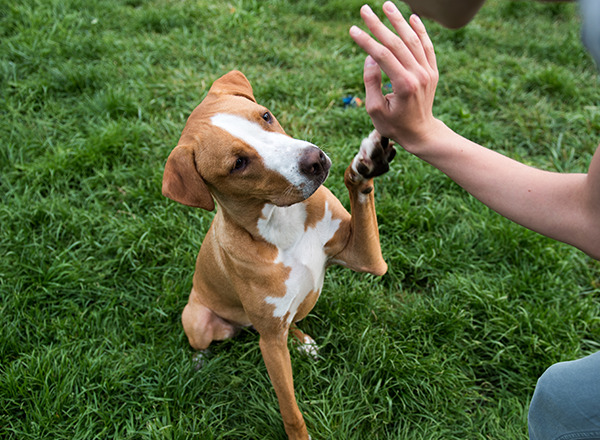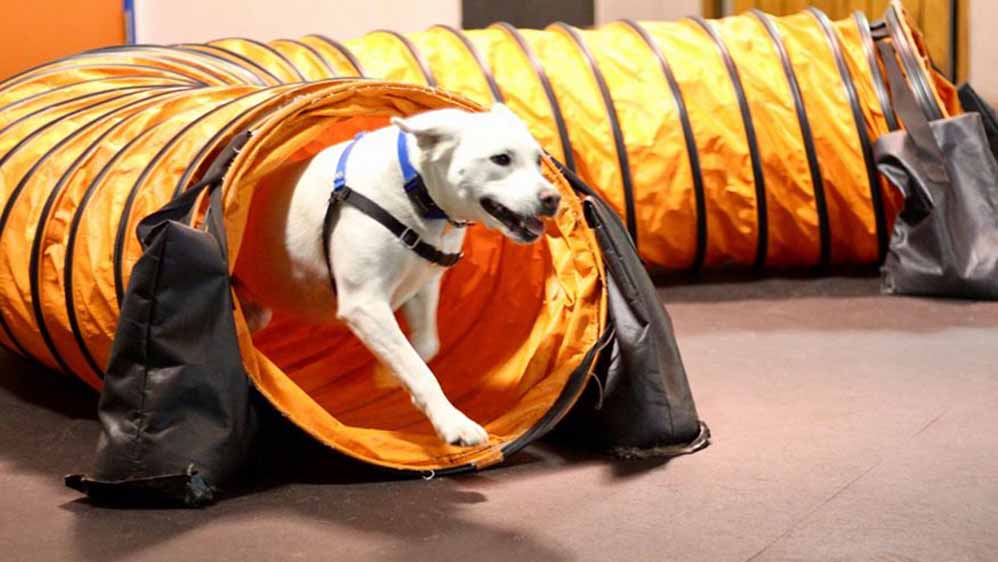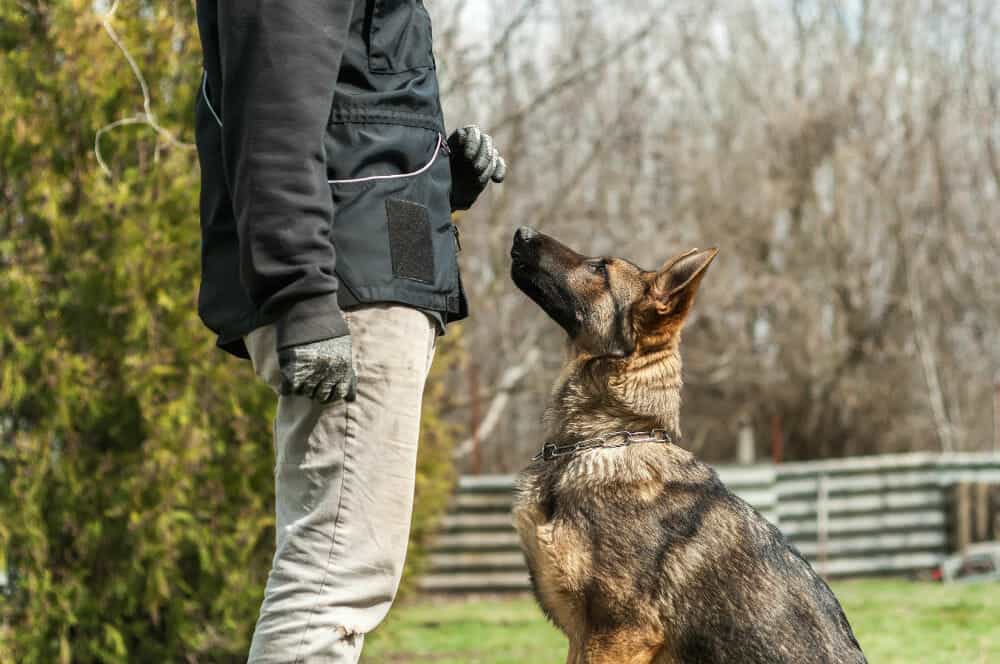How to Choose the Right Method for Effective Dog Training
How to Choose the Right Method for Effective Dog Training
Blog Article
Necessary Tips for Effective Dog Training: A Guide for Animal Owners
Effective pet training is a multifaceted process that requires a calculated approach customized to both the family pet's personality and the owner's objectives. Secret elements such as establishing regular commands, utilizing positive reinforcement, and helping with early socializing play crucial functions in promoting a well-adjusted canine buddy. Lots of animal proprietors experience challenges that can hinder progression, leading to disappointment and unpredictability. Comprehending exactly how to navigate these barriers can substantially boost the training experience, eventually transforming the relationship in between proprietor and pet. What are the crucial approaches that can be utilized to guarantee success in this endeavor?
Understanding Canine Habits
Comprehending dog behavior is essential for reliable training and cultivating an unified partnership between dogs and their proprietors. dog training. Pets interact largely via body language, vocalizations, and actions, making it essential for proprietors to analyze these signals precisely.

Socialization plays a considerable function in pet dog habits; exposure to different settings, individuals, and other animals can substantially affect a dog's character. Aspects such as type qualities and individual personality must guide training methods, as some types might have particular behavior qualities that require tailored strategies. By recognizing these aspects, proprietors can produce a supportive setting that motivates positive habits, leading to effective training outcomes and a much deeper bond with their family pets.
Developing Consistent Commands
Reliable communication with your dog starts with establishing constant commands. This fundamental element of training is essential for promoting understanding between you and your pet dog. Consistency in the commands you make use of makes sure that your pet can dependably associate particular words or phrases with the preferred habits.
When selecting commands, select clear, distinct words that are easy to differentiate and state from one another. Avoid utilizing similar-sounding commands that might confuse your pet dog. Using "rest" and "remain" is appropriate, but "sit" and "struck" might lead to misconceptions.
In addition, keep the same tone and volume for each command. Dogs are delicate to singing hints, so differing your tone can produce complication.
It is similarly vital to ensure that all relative get on the very same web page concerning the commands used. A united front in command use will certainly stop blended signals and reinforce the knowing process.
Favorable Support Techniques
The power of favorable support in canine training lies in its capacity to motivate desired behaviors through rewards and appreciation. This method is based in the concept that behaviors adhered to by desirable results are most likely to be duplicated. By incorporating favorable reinforcement right into your training routine, you can properly shape your dog's habits in a constructive fashion.
To carry out positive reinforcement, it's vital to identify what motivates your dog, whether it be deals with, playthings, or verbal appreciation. When your canine executes a preferred action, such as remaining on command, promptly reward them with a treat or love. This association between the command and the favorable outcome enhances their understanding.
It's essential to timing the benefits correctly; providing the support within seconds of the desired actions helps your canine make the link (dog training). Additionally, consistency is essential-- guarantee that all relative use the very same commands and reward systems to prevent complication

Slowly, you can minimize the regularity of treats as your canine discovers the behavior, transitioning to applaud or recurring incentives. This method not only fosters a solid bond between you and your pet but likewise advertises a favorable discovering setting, making educating a pleasurable experience for both.
Socialization and Communication
Regularly subjecting your pet to a selection of atmospheres, people, and other animals is essential for their social advancement. Socializing needs to start early, preferably throughout the essential home window of 3 to 14 weeks, when puppies are most receptive to new experiences. Older canines can likewise benefit from continuous socialization efforts.
Introduce your pet dog to different setups, such as parks, pet-friendly shops, and city locations. This direct exposure assists them adapt to various stimuli, decreasing anxiety and worry reactions. Urge favorable communications with other dogs and people, guaranteeing that these encounters are regulated and safe to cultivate self-confidence.
Make use of structured playdates with well-mannered canines, as this can enhance your pet's social abilities and teach them ideal behavior. Obedience classes and training sessions also provide superb chances for socialization, allowing your dog her latest blog to engage with others in a supervised setting.
Monitor your pet dog's body language throughout interactions, as this will certainly help you assess their comfort level. Gradually enhance direct exposure to more difficult situations while making certain that each experience is favorable. A well-socialized dog is more probable to exhibit balanced actions, making them a delight to have in any type of setup.
Addressing Usual Training Challenges
Every pet dog proprietor will certainly experience training challenges at some time, despite their pet's age or socialization level. Determining usual problems such as stubbornness, disturbances, and fearfulness can help in establishing reliable approaches for improvement.

Gradually present disturbances as the canine ends up being much more skilled in commands. Short, constant training sessions are also reliable in preserving interest.
Fearfulness can prevent a pet's discovering procedure. Gradual desensitization to the source of anxiety, coupled with positive support, can aid minimize stress and anxiety. Persistence is critical; never ever require a canine into a scenario that triggers distress, as this may aggravate the concern.
Eventually, understanding and dealing with these usual difficulties with a structured strategy will certainly promote a much more effective training experience, enhancing the bond between pet dog and proprietor while advertising effective understanding.
Final Thought
In summary, successful dog training relies upon a comprehensive understanding of canine actions, the establishment of regular commands, and the application go to my site of positive support techniques. Socialization plays an essential duty in developing well-adjusted pet dogs, while dealing with usual training challenges calls for patience and flexibility. By implementing these necessary methods, pet dog proprietors can promote a solid bond with their dogs and promote preferable behaviors, eventually causing a harmonious connection in between human beings and their canine companions.
Comprehending pet actions is vital for reliable training and fostering a read here harmonious connection in between canines and their owners.Socializing plays a substantial role in canine habits; exposure to different settings, individuals, and various other animals can considerably affect a pet dog's personality.The power of favorable support in dog training lies in its capacity to encourage desired habits with benefits and appreciation. By including favorable support right into your training regimen, you can efficiently shape your canine's behavior in a useful manner.
In recap, successful canine training depends on a detailed understanding of canine behavior, the facility of regular commands, and the application of positive support methods.
Report this page